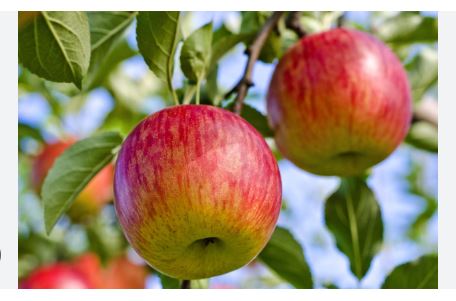
The Fuji apple is classified as Malus domestica, a species within the Rosaceae family, which includes other pome fruits like pears, cherries, and roses. The genus Malus encompasses all domesticated apple cultivars, and Fuji is a specific variety developed through intentional cross-breeding rather than a wild species or hybrid genus. It’s a result of crossing Red Delicious and Ralls Janet (also known as Rawls Jennet), blending traits from these American parents into a cultivar prized for dessert qualities. This places Fuji among late-season apples bred for sweetness, storage, and market appeal.
Fuji apples originated in the 1930s at the Tohoku Research Station in Fujisaki, Aomori Prefecture, Japan, under Dr. Shoten Hasegawa’s direction. Named after Mount Fuji—not Fujisaki, as is sometimes misattributed—it was released commercially in 1962 after decades of refinement. The cross of Red Delicious (for sweetness and color) and Ralls Janet (for storage and firmness) aimed to create an apple suited to Japan’s climate and consumer tastes. It quickly became Japan’s leading apple variety, comprising over 60% of production by the late 20th century. Introduced to the U.S. in the 1980s, it gained traction in Washington State, where growers capitalized on its long shelf life and export potential, making it a global favorite today alongside Gala and Granny Smith.
Fuji apples are medium to large, typically 7-9 cm in diameter (about 200-300 grams), with a round-to-slightly flattened shape. Their skin is thick, glossy, and waxy, featuring a yellow-green base overlaid with a vibrant red-to-pink blush or striping, varying by strain (over 100 Fuji clones exist). The flesh is pale cream, dense, and exceptionally crisp, encasing a small core with tiny brown seeds. They ripen late in the season (October-November) and store remarkably well—up to a year refrigerated—retaining crunch and flavor. The taste is predominantly sweet, with high sugar content (14-16% Brix), low acidity, and a juicy bite, offering subtle honey and citrus notes. Some detect a faint tartness in early picks, but sweetness dominates, especially after storage enhances flavor.
Fuji apple trees thrive in USDA zones 4-9, suited to temperate regions with cold winters and warm summers, like Japan’s Aomori or Washington’s Yakima Valley. They require 500-1000 chill hours (below 45°F/7°C) for dormancy and fruit set, performing best in zones 5-8 where winters aren’t too harsh (down to -20°F/-29°C) and summers reach 75-85°F (24-29°C). Late blooming (April-May, flower group 3-4) helps them avoid spring frosts, though protection is needed in zone 4’s colder extremes. They demand full sun (6-8 hours daily) and well-drained, loamy soil (pH 6.0-7.0), adapting to varied elevations but excelling below 2,000 meters where heat doesn’t overly stress them.
Culinary Application of Fuji Apples
- Fresh Eating: Their crisp texture and intense sweetness make them a top choice for raw snacking or slicing into lunchboxes.
- Salads: Chopped or sliced, they add a juicy, sweet crunch to green or fruit salads, pairing well with walnuts or blue cheese.
- Baking: Baked into pies, crisps, or cakes, their firm flesh holds shape while releasing sweet juices, complementing cinnamon or nutmeg.
- Sauces: Cooked into applesauce, they provide a naturally sweet, smooth base, often needing no extra sugar due to high Brix levels.
- Drying: Sliced and dehydrated, they turn into chewy, sweet rings, perfect for snacks, trail mixes, or baking add-ins.
- Juicing: Pressed into juice or cider, they yield a sweet, refreshing drink with subtle citrus notes, great alone or blended.
- Roasting: Roasted with meats like pork or alongside root vegetables, they caramelize slightly, enhancing dishes with a sweet contrast.
Cultivation of Fuji Apples
- Climate: Fuji thrives in temperate climates with cold winters (500-1000 chill hours below 45°F/7°C) and warm summers (75-85°F/24-29°C). It needs distinct seasons for dormancy and fruit ripening.
- USDA Zones: Best suited to USDA zones 4-9, excelling in 5-8 where winters aren’t too severe (down to -20°F/-29°C) and summers aren’t excessively hot. Late frosts require monitoring in zone 4.
- Soil: Requires well-drained, loamy soil with a pH of 6.0-7.0, rich in organic matter. It tolerates sandy or clay soils if drainage is ensured, as waterlogging damages roots.
- Sunlight: Demands full sun (6-8 hours daily) for optimal fruit size, sweetness, and red blush development. Partial shade reduces yield and color intensity.
- Planting: Propagated via grafting onto rootstocks like M26 (semi-dwarf) or M9 (dwarf) for size control and earlier fruiting (2-4 years). Space trees 10-15 feet apart in rows 15-20 feet apart, planted in late winter or early spring.
- Watering: Needs consistent moisture—1-2 inches weekly—especially during bloom, fruit set, and summer growth (April-August). Drip irrigation prevents wet foliage; mature trees tolerate brief dry spells with deep watering.
- Support: Young trees require staking for 1-2 years to establish against wind due to shallow roots. Trellising or espalier systems in orchards improve airflow, sun exposure, and ease of harvest.
- Pollination: Late-blooming flowers (April-May, flower group 3-4) need cross-pollination with varieties like Gala, Granny Smith, or Honeycrisp blooming concurrently. Bees are critical; place pollinators within 50-100 feet or use hives.
- Pests: Vulnerable to codling moths, apple maggots, and aphids. Use pheromone traps, organic sprays (e.g., spinosad), or netting; encourage natural predators like birds or lacewings for control.
- Diseases: Prone to fire blight, apple scab, and powdery mildew. Prune for ventilation, apply sulfur or copper pre-bloom, and remove infected parts promptly—rootstock choice can enhance resistance.
- Harvest: Fruits ripen late season (October-November), picked when red blush covers 70-90% of the yellow-green base and flesh is firm (16-18 lbs pressure). Harvest in stages; mature trees yield 100-200 lbs annually.
- Yield: Begins fruiting 2-4 years after planting, peaking at 5-10 years with 150-300 apples per tree under optimal care. Thin fruit (1 per cluster, 6-8 inches apart) in June to improve size and prevent biennial bearing; lifespan reaches 30-50 years.